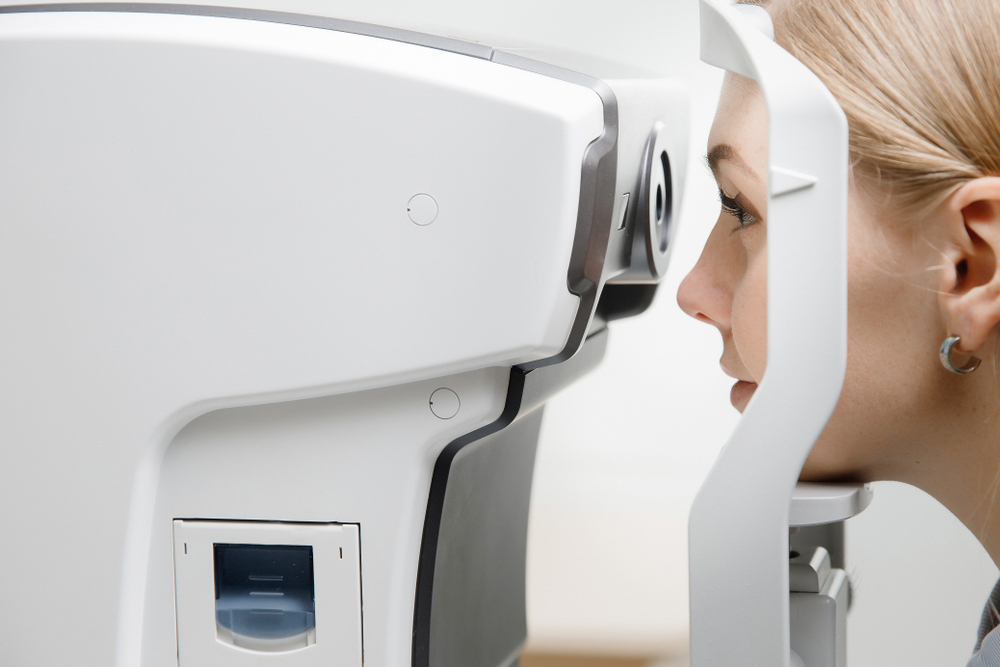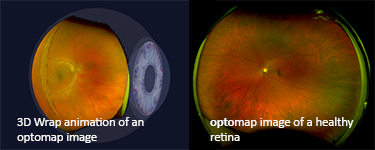What do you expect from an eye exam? Reading out increasingly small letters? That’s certainly part of it, but an eye examination these days means so much more than that. We use a digital retinal photography to take images of the inside of your eyes and look for signs of potential eye diseases such as glaucoma, cataracts or macular degeneration. Plus, there’s another test that’s even more advanced to help make our findings even more accurate – Optical Coherence Tomography (OCT Eye Scan).
What is OCT?
 Simply put, OCT is an eye scan. This quick, easy and non-invasive scan will capture the layers at the back of the eye as well as the surface, creating a 3D image that the optometrist can use to look carefully at each layer of your eye. This enables them to search out any areas of concern, comparing results from previous scans to detect the subtlest of changes in the eye.
Simply put, OCT is an eye scan. This quick, easy and non-invasive scan will capture the layers at the back of the eye as well as the surface, creating a 3D image that the optometrist can use to look carefully at each layer of your eye. This enables them to search out any areas of concern, comparing results from previous scans to detect the subtlest of changes in the eye.
At our Dorking practice, previously called Emslie Optometrists Dorking, you will also be able to take advantage of our Optomap scan with Ultra-Wide Field imaging – one of the newest and most advanced pieces of scanning equipment to date that can capture over 200⁰ of the retina, as opposed to the traditional 45⁰ view with regular imaging techniques.
How an Eye Scan Could Save Your Vision?
 By booking an OCT or Optomap advanced eye examination, you are ensuring you get the best eye test in London and surrounding areas. The eye scan is starting to be seen as a standard in eye testing as it is so easy for you as a patient, and so useful for the optometrist. The OCT or Optomap scan can be used to detect and monitor the following conditions:
By booking an OCT or Optomap advanced eye examination, you are ensuring you get the best eye test in London and surrounding areas. The eye scan is starting to be seen as a standard in eye testing as it is so easy for you as a patient, and so useful for the optometrist. The OCT or Optomap scan can be used to detect and monitor the following conditions:
Age-Related Macular Degeneration
This condition affects your central vision and is the most common cause of loss of vision in people over the age of 50, but there are things that can help to slow progress so it’s important to detect it early on and monitor it.
Glaucoma
This condition that damages the optic nerve is thought to affect around 2 in every 100 people aged over 40, and can be hard to spot in its early stage, so early detection using advanced scanning can be a huge advantage.
Diabetic Retinopathy
This condition is a huge cause of visual impairment in adults, especially with diabetes now on the rise. Early detection means a better chance of successful treatment for conditions like diabetic retinopathy, so an OCT or Optomap scan could be invaluable.
Other Conditions
Macular holes and vitreous detachments can also be identified with the OCT or Optomap scans, and they can even detect high blood pressure. These scans can be used on patients young and old, and with both being quick and non-invasive, there really is no reason not to give yourself the best chance of keeping your vision!
Find Out More
 National Eye Health Week begins on September 23rd, so it’s the perfect time to book in your advanced eye examination. Request an appointment at any of our opticians in Farnham, Virginia Water, Pimlico and Dorking, or contact them to find out more about how a simple scan could help save your vision.
National Eye Health Week begins on September 23rd, so it’s the perfect time to book in your advanced eye examination. Request an appointment at any of our opticians in Farnham, Virginia Water, Pimlico and Dorking, or contact them to find out more about how a simple scan could help save your vision.

